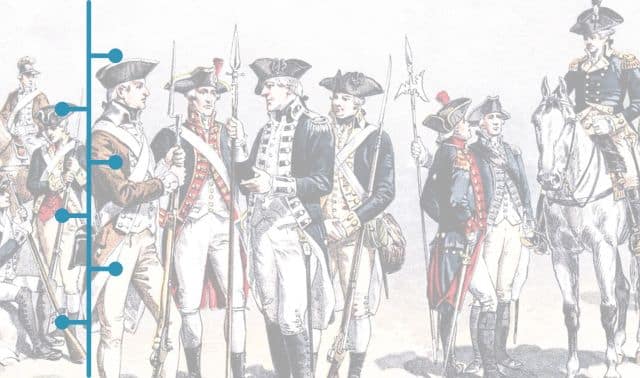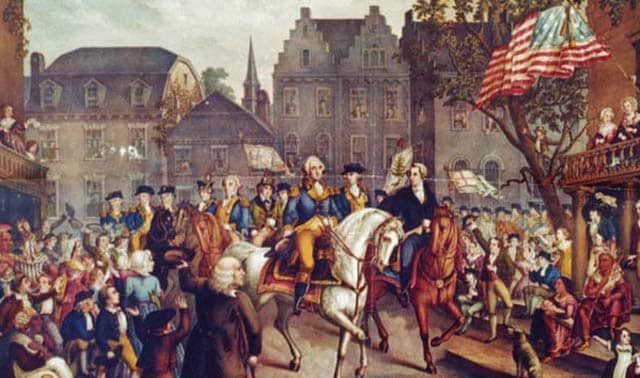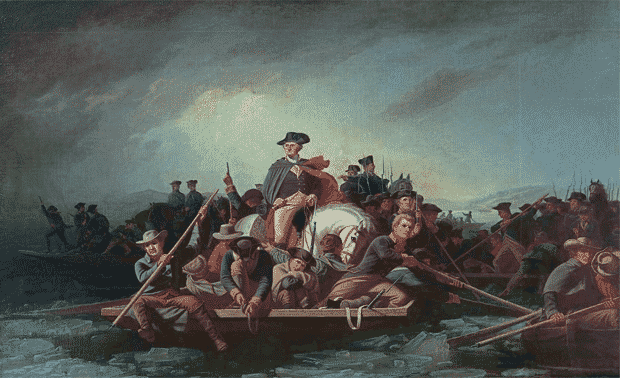Sign up for the Family Tree Newsletter Plus, you’ll receive our 10 Essential Genealogy Research Forms PDF as a special thank you!
Get Your Free Genealogy Forms
"*" indicates required fields
The United States will soon celebrate its 250th birthday, unofficially beginning 16 December 2023 with the commemoration of the Boston Tea Party. Learn about festivities from the America250 website.
Here’s a roundup of the Boston Tea Party and other key events in the American Revolution that you can celebrate as they reach the semiquincentennial milestone.
1773
- December 16: During the “Boston Tea Party,” colonists protest British taxes by dumping tons of tea into Boston Harbor
1774
- January: The Royal American Magazine, the first periodical to regularly use engraved illustrations, begins; Paul Revere and John Hancock are among the contributors
- March 31: The British Parliament passes the first of five “Intolerable Acts” designed to punish Massachusetts for the Boston Tea Party
- September 5: The First Continental Congress meets in Philadelphia
1775
- March 23: At the Second Virginia Convention, Patrick Henry proclaims, “Give me liberty or give me death!”
- April 19: “The Shot Heard ‘Round the World” is fired as colonists engage the British in the Battles of Lexington and Concord in Massachusetts; the night before, Paul Revere and others famously ride to Lexington to warn that the British are coming
- May 10: The Green Mountain Boys, led by Ethan Allen and Benedict Arnold, capture the British fort at Ticonderoga; the Second Continental Congress convenes
- June 15: George Washington is named commander of a new Continental army
- June 17: British troops triumph at the Battle of Bunker Hill, but suffer significant casualties
- July 5–6: Congress adopts “the Olive Branch Petition” (an attempt at peace with Britain) and a “Declaration of the Causes and Necessity of Taking Up Arms” (which explained the Colonies’ grievances)
- July 26: Congress establishes a postal service, naming Benjamin Franklin postmaster general
1776
- January 10: Thomas Paine anonymously publishes Common Sense, which advocates independence and becomes widely popular among colonists
- March 17: After a 10-month siege, American forces drive the British from Boston
- May 4: Rhode Island is the first US colony to announce independence from Great Britain
- July 4: Congress adopts the Declaration of Independence
- August 27: The British win the Battle of Long Island, eventually driving American forces from the New York City region
- December 25–26: Washington leads his troops across the Delaware River to attack British allies at Trenton, N.J., inspiring a famous portrait
1777
- June 14: The United States adopts its official flag
- September 26: The British capture the Colonial capital of Philadelphia, forcing the Continental Congress to flee
- October 17: British General John Burgoyne surrenders at Saratoga, N.Y., a major turning point in the Revolutionary War
- December 19: Washington sets up a winter encampment at Valley Forge, Pa. Over the next few months, roughly 2,000 soldiers die of disease
1778
- February 6: France acknowledges American independence, the first sovereign nation to do so
- June 18: The British evacuate Philadelphia
1779
- April 12: Spain formally enters the war as an ally of France, and declares war on Great Britain on June 21
- September 23: John Paul Jones vows, “I have not yet begun to fight,” and defeats the British frigate Serapis
1780
- September 24: General Benedict Arnold is discovered as a traitor and defects to British forces
1781
- March 1: The 13 colonies ratify the Articles of Confederation, a self-government plan
- October 19: At Yorktown, Va., Gen. Charles Cornwallis surrenders to Washington in the last major battle of the war
1782
- August 7: Washington designates the first version of the Purple Heart, known as the Badge of Military Merit; it is the United States’ first military medal
- Virginia legislators make it legal for any man “to emancipate and set free his slaves”
1783
- September 3: The United States and Great Britain sign the Treaty of Paris, which recognizes American independence and sovereignty over lands east of the Mississippi River
- The US population is 2.4 million
An early version of this article appeared in the August 2003 issue of Family Tree Magazine. Last updated, December 2023.
Related Reads
ADVERTISEMENT









